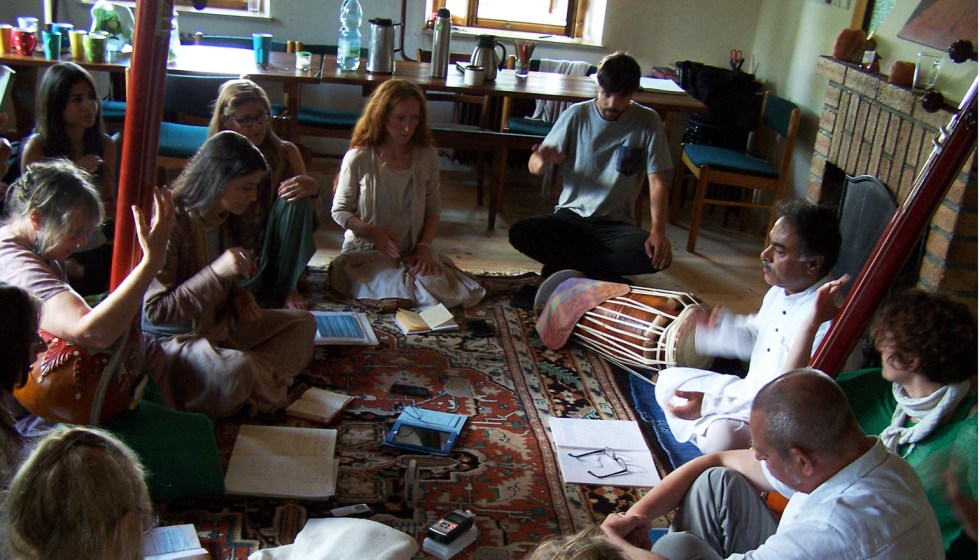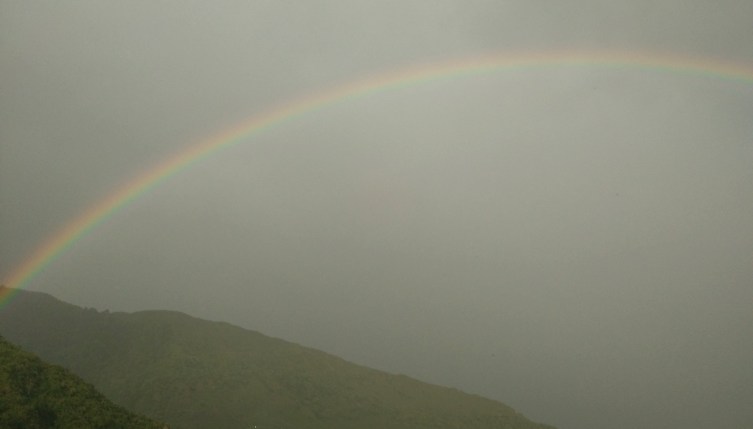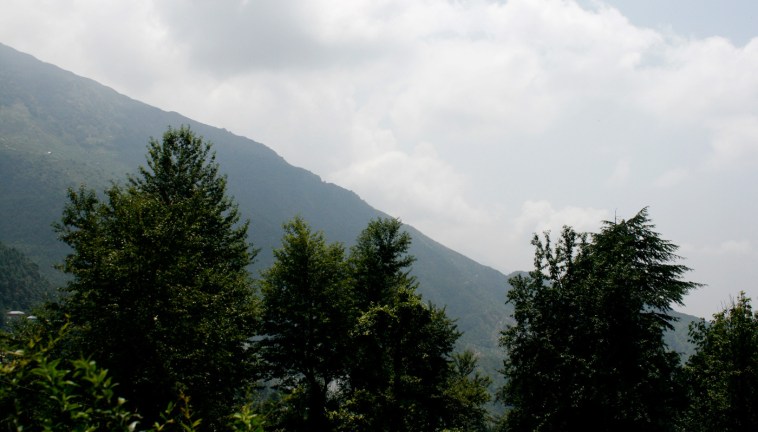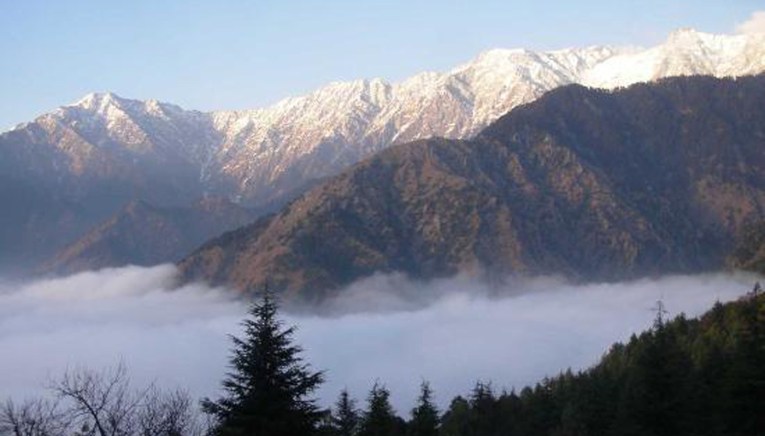
DHRUPAD IN THE HIMALAYAS
We are happy to announce the second annual Dhrupad retreat 2017 with Pandit Nirmalya Dey, who is an exponent of the Dagarvani form of Dhrupad.
It has been our long time dream to do an intensive Dhrupad retreat in the Himalayas. The retreat will be held in the Himalayan village Dharamkot from Sunday, March 5 to Saturday, March 11, 2017.
DHRUPAD RETREAT VARANASI 2016
In 2016 we had a very successful Dhrupad retreat in Varanasi. It was a 10 day intensive retreat that was immensely productive and well attended. This year’s Dhrupad retreat and workshop is an extended opportunity to last years participants to followup on their training. Fresh retreatants are welcome.
This is a video directed by Andrei Demidenko, that documents last year’s retreat.
DHRUPAD THE CORE OF INDIAN CLASSICAL MUSIC
Dhrupad is the core of Indian classical music. The genre carries all the subtle nuances of classical music, prescribed in the old Sanskrit scriptures. A more detailed description of the Dhrupad can be found here:
http://www.nirmalyadhrupad.org/dhrupad/
Dhrupad consists of several sections including Alap, Madhya-Alap, Drut-Alap, Composition and improvisation. A more detailed description of the Dagarvani Dhrupad can be found here:
http://www.nirmalyadhrupad.org/dagargharana/
Essentially Dhrupad is a high art form, it is austere, and focuses on the purity of the sound and notes. The retreat participant will be exposed to the basic as well as subtle aspects of the Dhrupad.

DHRUPAD AS NADAYOGA
The Nad Yoga aspect of the Dhrupad, is immensely enhanced by the purity of the nature in the Himalayas. The Himalayas are home to thick pine forests, ultra pure air and crystalline glacial water, that are perfect for practicing Dhrupad meditatively and deeply.
India is the ancient land of spirituality. In times before recorded history, a spiritually advanced civilization lived here, and they lived a very high grade lifestyle which brought the world spiritual gems such as Yoga, Sanskrit, Ayurveda, the Vedas and the Dhrupad.
Each of these were an aspect of the higher life. Yoga means to connect with the divine. Ayurveda is the science of health and holistic living. Sanskrit is the language in which all of the knowledge of this higher civilization was recorded. The vedas express spiritual truths. And Dhrupad is Nad Yoga or sound meditation.
According to Patanjali’s yoga sutras yoga is simply expressed in three words:
Citta Vritti Nirodha
Citta means mind, vritti means thoughts and Nirodha means stop. Today yoga has become identified with Asanas or postures, which are a small part of the real yoga. The asanas are designed to get the body and energy into good shape, so as to enable deeper meditation with the goal of achieving Samadhi, or a deep still state of mind.
Meditation, asanas and other forms of spiritual practice are powerful, however according to many music is among the most powerful way to connect with the divine.
According to Ustad Zia Fariduddin Dagar, there are two types of music, Desi and Margiya. While the Desi music is designed for entertainment, the Margiya music is primarily for connection to the divine.
The Dhrupad is Margiya music, and is designed to induce deeply meditative states of mind.

DHRUPAD IN THE HIMALAYAS
In India, from ancient times, yogis and mystics always lived and practiced in forest hermitages, away from the cities. Of these, the most cherished and sought after in yogic circles have always been, the Himalayas. These mountains have a very special energy and yogis and mystics of all inclinations have made a beeline for the Himalayas to deepen their meditation or to give up city life, for living in the lap of deep nature.
The above background puts into practice the immensity and depth of doing intensive dhrupad retreats in the Himalayas, with one of the greatest living masters of the Dhrupad, Pandit Nirmalya Dey. This is a pioneering retreat, and we hope this will be the beginning of more to come.
There are tremendous synergies to doing Dhrupad in the Himalayas.
- Predawn Kharaj with pure Himalayan Oxygen
- The effects of Himalayan glacial water on health, body, energy and voice
- The effects of walking in the mountains on health, body, energy and voice
- The role of breath in Nad Yoga and the impact of super pure air on breath
- The meditative vibe in the Himalayas
- The meditation centers in Dharamkot that retreatants can avail of
- The Dalai Lama and his primary base being in McLeod Ganj and access to Tibetan Buddhist meditation centers, libraries.
- Combining Yoga asanas with Dhrupad in the Himalayas
- Combining formal meditation with Dhrupad.

DHARAMKOT
The Wikipedia says:
“Dharamkot is a small hill station in Kangra district in the state of Himachal Pradesh, India. On the crest of a hill above McLeodGanj, Dharamkot is an attractive spot that presents a wide view of the Kangra Valley and the Dhauladhar ranges. There are a couple of small (and interesting) eateries around. Several foreigners have taken residence in the area; all live in village homes and tiny guest houses. Dharamkot also has the Vipassana meditation centre, Dhamma Shikara, as well as the Tushita Meditation Centre which is a centre for the study and practice of Buddhism in the Tibetan Mahayana tradition.
Past Dharamkot, at a distance of 9 km from McLeodGanj, much of which is a steady climb, Triund is at the foot of the Dhauladhar ranges and is at a height of 2,827 m. The snow line, which is considered to be the most easily accessible in the entire Himalayan range starts from Ilaqua, 4 km from Triund. A good walker will take around four hours to reach Triund from McLeodganj and another one and a half to two hours to reach Ilaqua. After Dharamkot, one passes by the Galu Devi Temple when the climb and the trail becomes demanding.”
McLeod Ganj
The Wikipedia says:
McLeod Ganj (also spelt McLeodGanj or Mcleodganj) is a suburb of Dharamsala in Kangra district of Himachal Pradesh, India. It is known as “Little Lhasa” or “Dhasa” (a short form of Dharamshala used mainly by Tibetans) because of its large population of Tibetans.[1] The Tibetan government-in-exile is headquartered in McLeod Ganj. The Dalai Lama is based in McLeod Ganj.
It has an average elevation of 2,082 metres (6,831 feet). It is situated on the Dhauladhar Range, whose highest peak, “Hanuman Ka Tibba”, at about 5,639 metres (18,500 feet), lies just behind it.